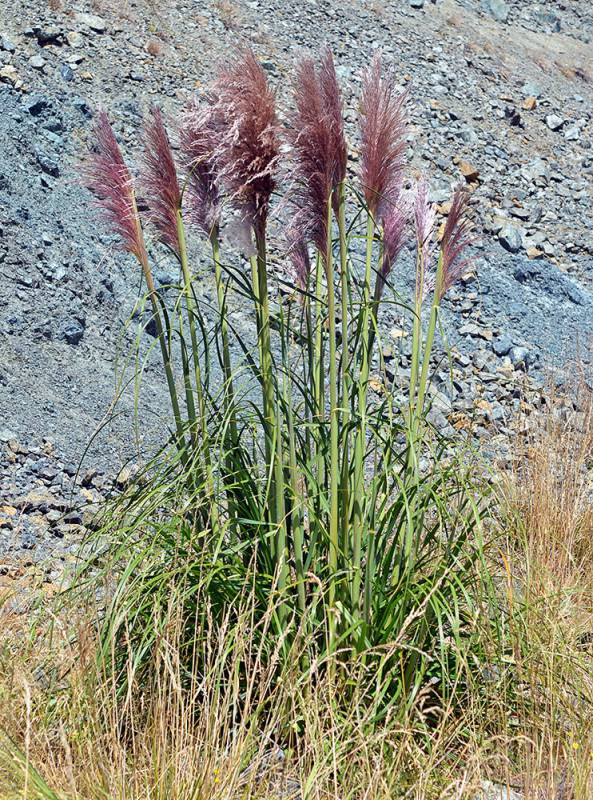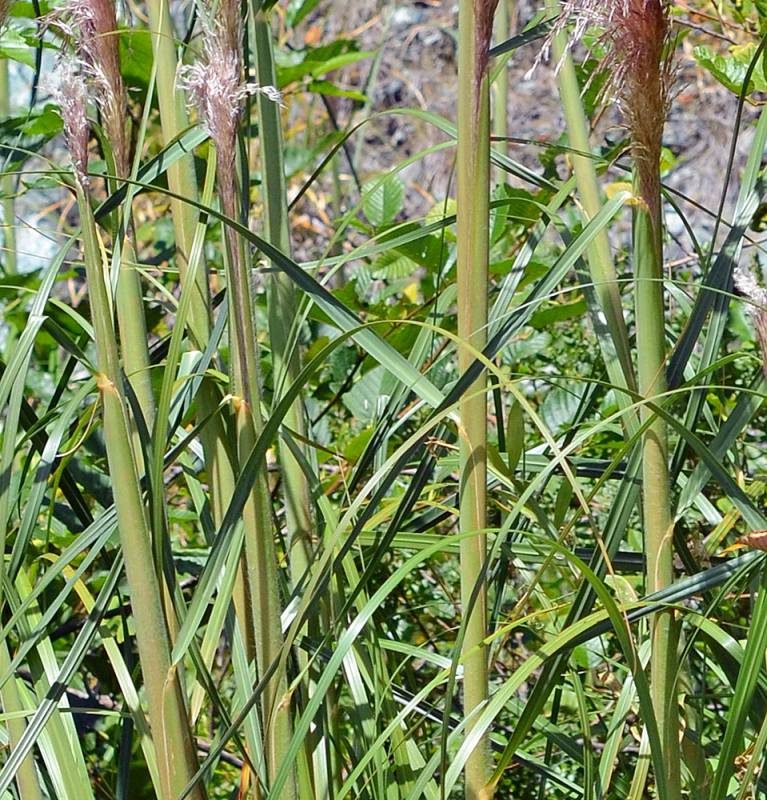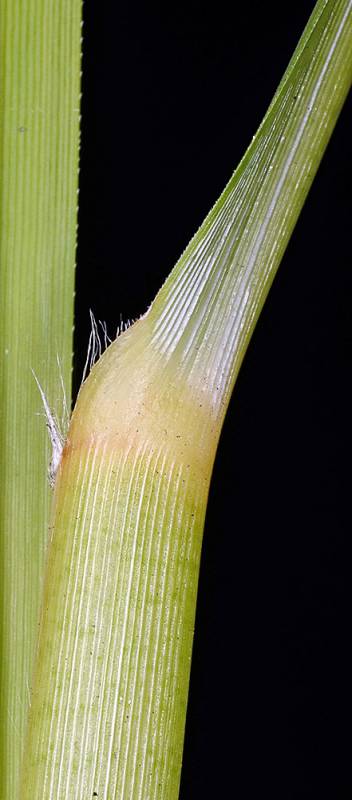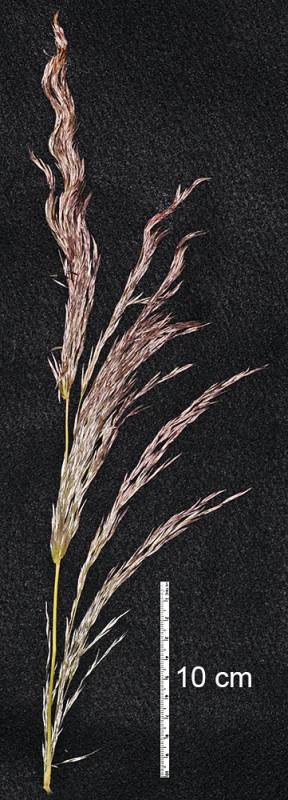Jubata grass identification and control
Information about the noxious weed jubata grass. Jubata is also known by its Latin name, Cortaderia jubata.
About this weed
Jubata grass is a non-regulated Class C noxious weed. This means property owners are not required to control this species on their property, though it is encouraged.
Jubata grass is known as Cortaderia jubata and it is in the grass family. It is native to South America and is also known as purple pampas grass and pink pampas grass.

Why it's a problem
Jubata grass is slow to start but grows rapidly once seedlings become established. An individual plume can produce 100,000 seeds and large clumps can make a million or more seeds. Jubata grass produces viable seeds without pollination and some plants can flower twice in one season. It grows aggressively and can crowd out native species. The saw-toothed leaves can also cause injury to people. It is also listed as a noxious weed in California and Oregon where it threatens coastal ecosystems.
Plant description
Jubata grass is found along the coast in California and Oregon. It thrives in areas with cool, wet winters, little frost and moderate summers. It is also found in disturbed open areas like roadsides, ditch banks, forest clearcuts, mudslides or burned areas. It is typically found in sandy soil but can survive elsewhere.
Jubata grass is a large perennial (2+ year life cycle) grass that grows in clumps of long narrow leaves.
Traits of jubata grass include:
- Leaves are deep green, around 6 feet long and an inch wide. The blade surface is typically hairless, but the leaf sheath is very hairy. Leaf edges are sharp and can cut skin.
- Flowering stems are stiff and grow 6 feet tall or more, generally twice as tall as the leaves.
- Flowers occur in dense plumes at stem tips and range from 1 to 3 feet long. They are deep violet at first, then become pinkish to creamy white at maturity.
- All flowers can seed without pollination.
- The roots are dense and fibrous. They grow from shallow and short rhizomes (horizontal roots that sprout new plants).



Be aware of look-alike plants
Jubata grass looks very similar to pampas grass. The University of California’s WEED Research and Information Center has a helpful document detailing the differences between the two species.
It can also be confused with Ravenna grass, a class B noxious weed.
What to do if you find it
Property owners in King County are not required to control jubata grass and we are not tracking infestations. The King County Noxious Weed Control Board encourages property owners to remove it where possible and avoid introducing it to new landscapes.
Prevention
Prevention is a much easier route than controlling a mature infestation. Seeds can be carried on shoes, clothing, tools and vehicles, so make sure to clean off after entering infested areas. Instead of planting jubata grass in gardens, consider alternatives such as Calamagrostis acutiflora ‘Karl Foerster’ or Stipa gigantean, giant needle grass.
Control methods
In areas with few weeds, it is important to act quickly before they become harder to control. Make a long-term plan as it often takes several years to get rid of most weeds. Start in the least infested areas first and then move into more heavily infested areas. To reduce costs and environmental impacts, please consider a combination of methods.
Personal protective gear is important when controlling jubata grass. The leaf edges are sharp so wear leather gloves and protective clothing.
Manual control
Cut and bag the flower heads prior to control to prevent spreading the seeds. Pulling and digging are effective methods. Remove the entire top section of the roots to prevent resprouting.
Cultural control
When controlling these plants, try to minimize soil disturbance which aids seed germination. Mulch bare ground to smother seeds and prevent growth. Consider replanting the area with non-invasive grasses and sedges to compete with any new jubata grass seedlings.
Chemical control
Larger patches most likely will need an herbicide treatment to be effective. Avoid spraying where herbicide may enter a waterway or wetland unless you are using a state-approved aquatic herbicide and have the required permits and licenses to do so. Use of pesticides in water is regulated in Washington state. See Washington Department of Ecology Aquatic Pesticide Permits for details. Always read the label before using herbicide and follow state and local regulations.
Spot treatments with glyphosate have been effective in summer or fall. The best time is before seed set in late summer. For large infestations, consider combining methods like cutting or burning before treating regrowth. This strategy will use less herbicide. Always monitor sites for any plants that resprout and need follow up treatment. For more specific herbicide recommendations, see the link to Pampasgrass and Jubatagrass information from the University of California WEED Research and Information Center.
Disposal instructions
Cut and bag the flower heads prior to control to prevent spreading seeds. Uprooted plants left on the soil may take root and regrow, so turn the clump upside down and expose the roots to the air to decompose.
Washington State Noxious Weed Control Board pamphlet on noxious weed disposal

 Translate
Translate